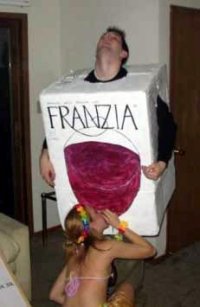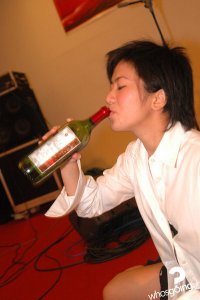A test of Bordeaux wine rating services for fine vintages shows that the three most prominent authorities are consistent in their ratings. Thus, consumers can confidently rely on those ratings if they wish, according to a new wine classification study from Cornell's Center for Hospitality Research. At the same time, an examination of those modern-day ratings found that the existing French classification of Bordeaux wine chateaux, developed in 1855, is out of date.
Available from the center's website, the study, "An Analysis of Bordeaux Wine Ratings, 1970-2005: Implications for the Existing Classification of the Medoc and Graves," is written by the Cornell-based team of Gary M. Thompson, Stephen A. Mutkoski, Youngran Bae, Liliana Ielacqua, and Se Bum Oh. Bae, Ielacqua, and Oh are graduates of the Master of Management in Hospitality program at the Cornell School of Hotel Administration.
A key conclusion of the authors is that consumers of fine wines can rely on any of the three major wine rating systems – which are Robert Parker's Wine Advocate, Steven Tanzer's International Wine Cellar, and the Wine Spectator. “Certainly wine purchasers can rely on their own good judgment, but we found strong congruence among the ratings of these three services throughout the 339 combinations of vintage and chateau that we tested,” noted Thompson, who is a professor of operations management at Cornell. “However, because one rater is consistently higher than the others, consumers should not consider all equally-rated wines as being equally good, when those ratings are coming from different sources.”
Wine rating system for Chateaux has not aged well, according to new report
Mutkoski, who is Banfi Vintners Professor of Wine Education and Management, explained that the researchers' findings with regard to Bordeaux wine classifications for chateaux mean that consumers cannot rely entirely on those rankings. “In preparation for the 1855 World Exposition, the French established a five-rank classification for the chateaux, and those rankings, known as growths, have remained the same to this day,” he said. “Based on the wine scores that we analyzed, however, some chateaux have moved up in rank, while others have faded. While we doubt that the 1855 classification will be revised, market prices for these producers reflect the new standings. In fact, our findings are a tribute to those producers who have maintained or exceeded their classification in the past 150 years.”
The Bordeaux wine classification study specifies which chateaux have moved up in rank, based on the ratings from Parker, Tanzer, and Wine Spectator. As a final note for the hospitality industry, the authors point out that certain wine prices do not correspond perfectly with quality. Thus, sommeliers can – for instance – offer their customers an excellent wine at a relatively modest price.
Cornell's Center for Hospitality Research
skip to main |
skip to sidebar




Enhance the pleasure that you get from wine by sharing your experiences, knowledge, news articles and facts about the elixir of the gods and bacchanalia on earth by emailing: bacchusforyou@bellsouth.net

ORIGINAL BACCHANALIAN CREATION

BACCHANALIAN WINE GLASS

I LOVE WINE, BUT I NEED TO LEARN HOW TO DRINK IT

Related Links
Blog Archive
-
▼
2008
(305)
-
▼
July
(71)
-
▼
Jul 01
(17)
- RAZOR'S EDGE
- In Argentina's grape-growing region, hail-control ...
- Voga wine launches in UK
- They’re going to kill French wine
- CFA Reveals Alcohol, Calories and Carbs in Top Sel...
- Setting the perfect temperature for a beer, glass ...
- First wine institute to be set up near Pune
- Elegant wine accessory designed to accelerate the ...
- B. Napa's ``CRUSH'' Documentary Wins Top Award at ...
- Cornell Study identifies inconsistencies in tradit...
- Assemblymember Evans Sends Governor Legislation He...
- PRINCE CHARLES IS USING ENGLISH WINE AS FUEL!
- AUSTRALIA AND UK REMAIN HEALTHY
- Constellation Beats Expectations
- Bordeaux En Fleur
- The top 5 things to consider when planning a wine ...
- Touring Bordeaux
-
▼
Jul 01
(17)
-
▼
July
(71)
How Much Did The Best Bottle of Wine You Ever Drank Cost?
CONTACT INFORMATION
TO SUBMIT A POST, TO BE PUT ON THE MAILING LIST, TO HAVE QUESTIONS ANSWERED, ETC.
EMAIL: